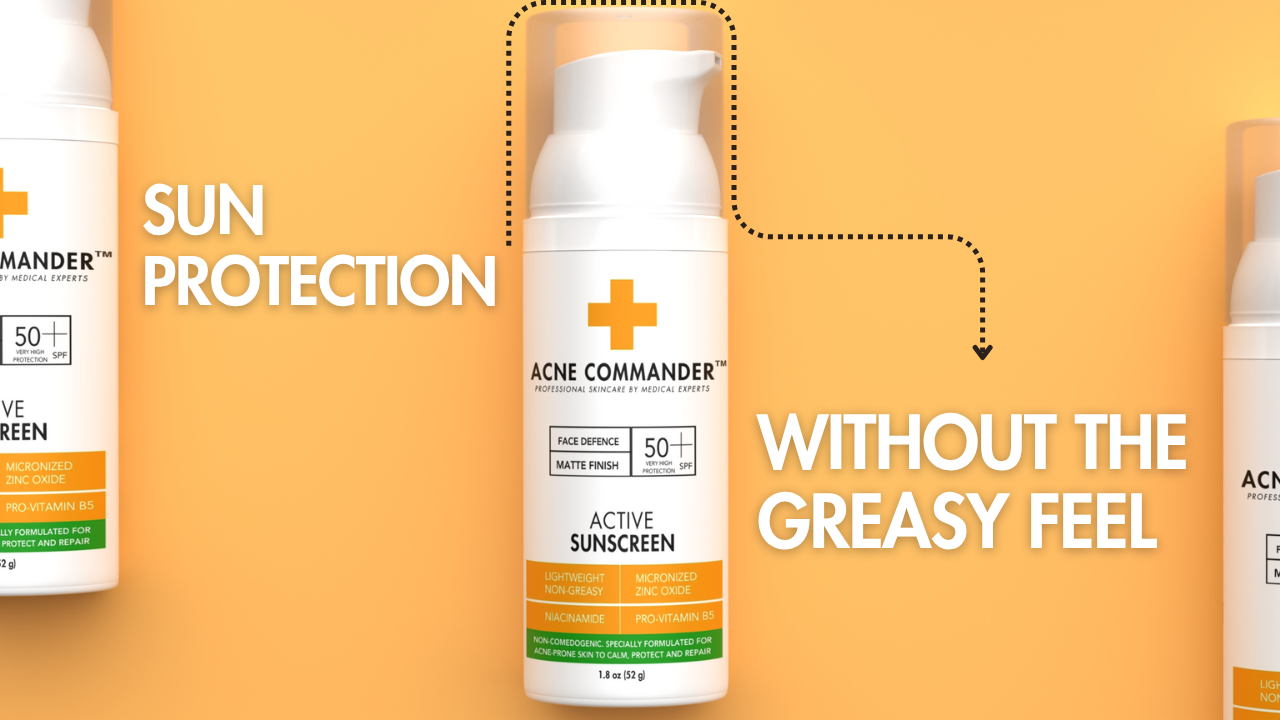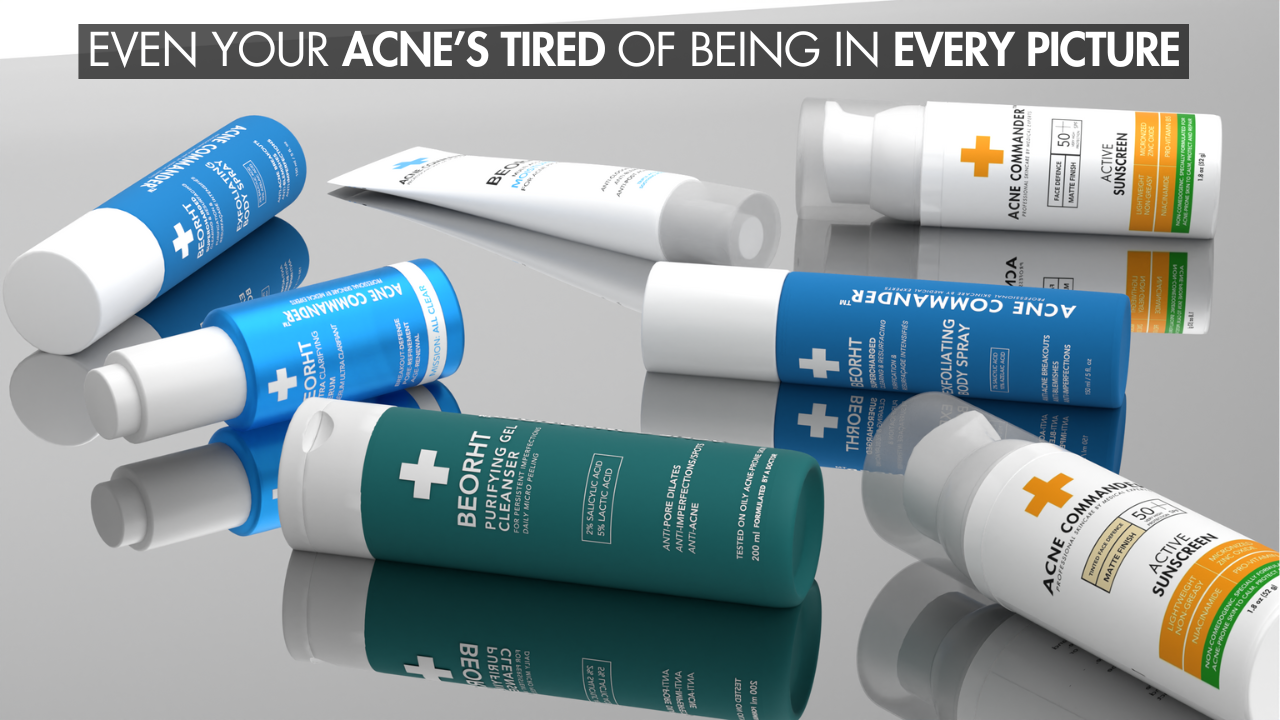Introduction: Is DIY Skincare for Acne a Smart Move?
The internet is flooded with DIY skincare recipes, from turmeric masks to banana peels, and while some offer real benefits, others can damage your skin barrier or worsen acne. If you’re searching for how to make your own face moisturizer for acne, it’s likely because you’re frustrated by breakouts and want more control over what goes on your skin.
But here’s the truth: homemade doesn’t always mean safe or effective.
This comprehensive guide will show you:
-
Whether DIY moisturizers for acne are a good idea
-
How to make one that’s non-comedogenic, hydrating, and soothing
-
What ingredients to avoid
-
Why professionally formulated moisturizers like Acne Commander 3-in-1 Repairing Moisturiser often outperform homemade options
Let’s start by understanding what your skin needs.
What Acne-Prone Skin Needs in a Moisturizer
Contrary to the myth that you should “dry out pimples,” acne-prone skin needs a carefully balanced moisturizer that:
-
Hydrates without clogging pores
-
Soothes inflammation
-
Supports barrier repair
-
Includes gentle anti-acne actives
-
Balances oil production
These needs are hard to meet with simple pantry ingredients, but with the right formula and knowledge, a basic DIY moisturizer can help mildly acne-prone or very sensitive skin.
Pros and Cons of Making Your Own Acne Moisturizer
✅ Pros
-
Full control over ingredients
-
Avoids irritants like fragrance or alcohol
-
Can be cost-effective
-
Tailored to your skin sensitivities
❌ Cons
-
No preservation, short shelf life
-
No clinical testing or comedogenicity assurance
-
Texture and absorption may not match professional products
-
Risk of using comedogenic oils or allergens
-
May lack potent acne actives like salicylic acid or zinc PCA
That’s why many dermatologists recommend DIY moisturizers only as a temporary solution, or for minimal acne, and suggest transitioning to a professional, science-backed product like Acne Commander as soon as possible.
Best Acne-Safe Ingredients for Homemade Moisturizers
To safely make your own moisturizer, you need to understand humectants, emollients, and occlusives, the three building blocks of effective moisturizers.
🔹 1. Humectants
(Draw water into the skin)
-
Glycerin – Hydrating, acne-safe, balances oil
-
Aloe vera gel – Soothing and lightly hydrating
-
Honey (raw or manuka) – Antibacterial and hydrating (use with care)
🔹 2. Emollients
(Smooth and soften skin)
-
Jojoba oil – Closest to skin’s natural sebum, non-comedogenic
-
Squalane – Lightweight oil, very acne-safe
-
Rosehip seed oil – Great for acne scarring and hyperpigmentation
🔹 3. Occlusives
(Seal in hydration)
-
Shea butter (small amount) – Only for very dry, tolerant skin
-
Beeswax – For thick, balm-style formulas
-
Candelilla wax – Vegan alternative to beeswax
Ingredients to Avoid in DIY Acne Moisturizers
Some popular natural ingredients can worsen acne. Avoid:
-
Coconut oil – Highly comedogenic
-
Olive oil – Can block pores
-
Heavy butters (cocoa, mango) – Not ideal for the face
-
Essential oils – Irritating (especially citrus, peppermint, tea tree, undiluted)
-
Milk or yogurt – Risk of bacterial contamination
Simple DIY Moisturizer Recipes for Acne-Prone Skin
🧴 Recipe 1: Lightweight Gel Moisturizer (No Oil)
Best for: Oily, sensitive, or inflamed skin
Ingredients:
-
2 tbsp pure aloe vera gel
-
1 tsp glycerin
-
2 drops panthenol (vitamin B5) or niacinamide serum (optional)
Instructions:
Mix aloe and glycerin in a sanitized container.
Add optional niacinamide.
Store in the fridge and use within 5–7 days.
How to Use: Apply a thin layer to a damp face after cleansing.
🧴 Recipe 2: Jojoba-Based Balancing Moisturizer
Best for: Combination or dry-acne skin
Ingredients:
-
1 tbsp jojoba oil
-
1 tbsp rose water or distilled water
-
1 tsp aloe vera gel
-
3 drops squalane oil (optional)
Instructions:
-
Shake together in a spray bottle or jar.
-
Use as a moisturizer or hydrating oil serum.
Shelf Life: Up to 2 weeks in the fridge.
🧴 Recipe 3: Healing Night Balm for Acne Marks
Best for: Night use on healing or post-acne skin
Ingredients:
-
1 tsp shea butter (softened)
-
1 tsp jojoba oil
-
2 drops rosehip seed oil
-
1 vitamin E capsule (optional)
Instructions:
-
Blend all ingredients using sanitized tools.
-
Store in a cool, dry place in a clean container.
Warning: Use sparingly. This is an occlusive balm, not for oily skin.
Tips for Making Acne-Friendly Moisturizers at Home
-
Sanitize all containers and tools
-
Use distilled or boiled water; tap water can grow bacteria
-
Make small batches and store in airtight containers
-
Label and date every container
-
Always patch test before using on the full face
-
Use at night only if unsure about how your skin will react
Limitations of DIY vs. Professionally Formulated Products
While DIY has its place, there are several critical limitations:
|
Feature |
DIY Moisturizer |
Acne Commander 3-in-1 |
|
Shelf Life |
3–10 days |
12–24 months |
|
Preservatives |
None (risk of bacteria) |
Safe & tested |
|
Clinical Testing |
No |
Yes |
|
Acne Actives |
Very limited |
Salicylic Acid, Niacinamide, Zinc PCA |
|
Barrier Support |
Basic oils |
2-Oleamido-1,3-Octadecanediol, Mannose |
|
Microbiome Repair |
No |
Vitreoscilla Ferment |
|
Non-Comedogenic Assurance |
No |
Yes (dermatologist-tested) |
Acne Commander 3-in-1 Repairing Moisturiser is created with advanced ingredients that DIY methods simply can’t replicate, ensuring consistent results for sensitive, breakout-prone skin.
Why Acne Commander Outperforms Homemade Moisturizers
If you’re struggling with persistent acne, DIY options may not deliver enough:
-
They lack targeted actives to unclog pores or reduce oil
-
There’s no quality control
-
The pH may be off, harming your skin microbiome
-
Texture and absorption are inconsistent
Acne Commander solves this with a triple-action formula:
-
Hydrate with glycerin, mannose, and dimethicone
-
Treat with dual salicylic acid, zinc PCA, niacinamide
-
Repair with ceramide-mimicking lipids and soothing plant extracts
It’s also non-comedogenic, fragrance-light, cruelty-free, and works for dry, oily, or combination acne-prone skin.

How to Transition From DIY to Acne Commander
If you’ve been using DIY moisturizers, here’s how to transition safely:
-
Stop DIY for 3–4 days
-
Patch test the Acne Commander on a small area
-
Use once daily for 3 days, then increase to twice daily
-
Monitor for improvement in:
-
Redness
-
Oil balance
-
Breakout reduction
-
Skin smoothness
You should notice significant improvements within 7–14 days.
FAQs: DIY Moisturizers for Acne
❓ Are natural moisturizers better for acne?
Not necessarily. Natural oils can be highly comedogenic. It depends on the formulation.
❓ Can I use coconut oil?
No. Coconut oil has a comedogenic rating of 4 out of 5 and often worsens acne.
❓ How can I make a non-comedogenic moisturizer?
Use ingredients like glycerin, aloe vera, jojoba oil, or squalane, and avoid rich butters or thick oils.
❓ Is honey good for acne moisturizers?
Manuka honey has antibacterial benefits, but should be used in tiny amounts or as a spot mask.
Conclusion: Should You Make Your Own Face Moisturizer for Acne?
Yes, but only if done correctly and cautiously.
DIY moisturizers can be a great short-term solution, especially if you’re avoiding irritating drugstore formulas. But they have serious limitations in terms of stability, potency, and acne-fighting ability.
That’s why switching to a clinically formulated, dermatologist-backed product like Acne Commander 3-in-1 Repairing Moisturiser is a game-changer. It offers everything your skin needs:
✅ Non-comedogenic hydration
✅ Active acne treatment
✅ Redness and oil control
✅ Barrier repair and microbiome support
✅ Lightweight, matte finish
So while DIY can be fun and educational, if your goal is clearer, healthier skin, trust science, and let Acne Commander do the heavy lifting.






